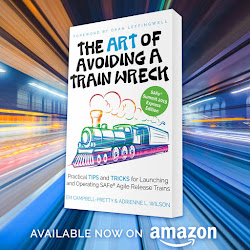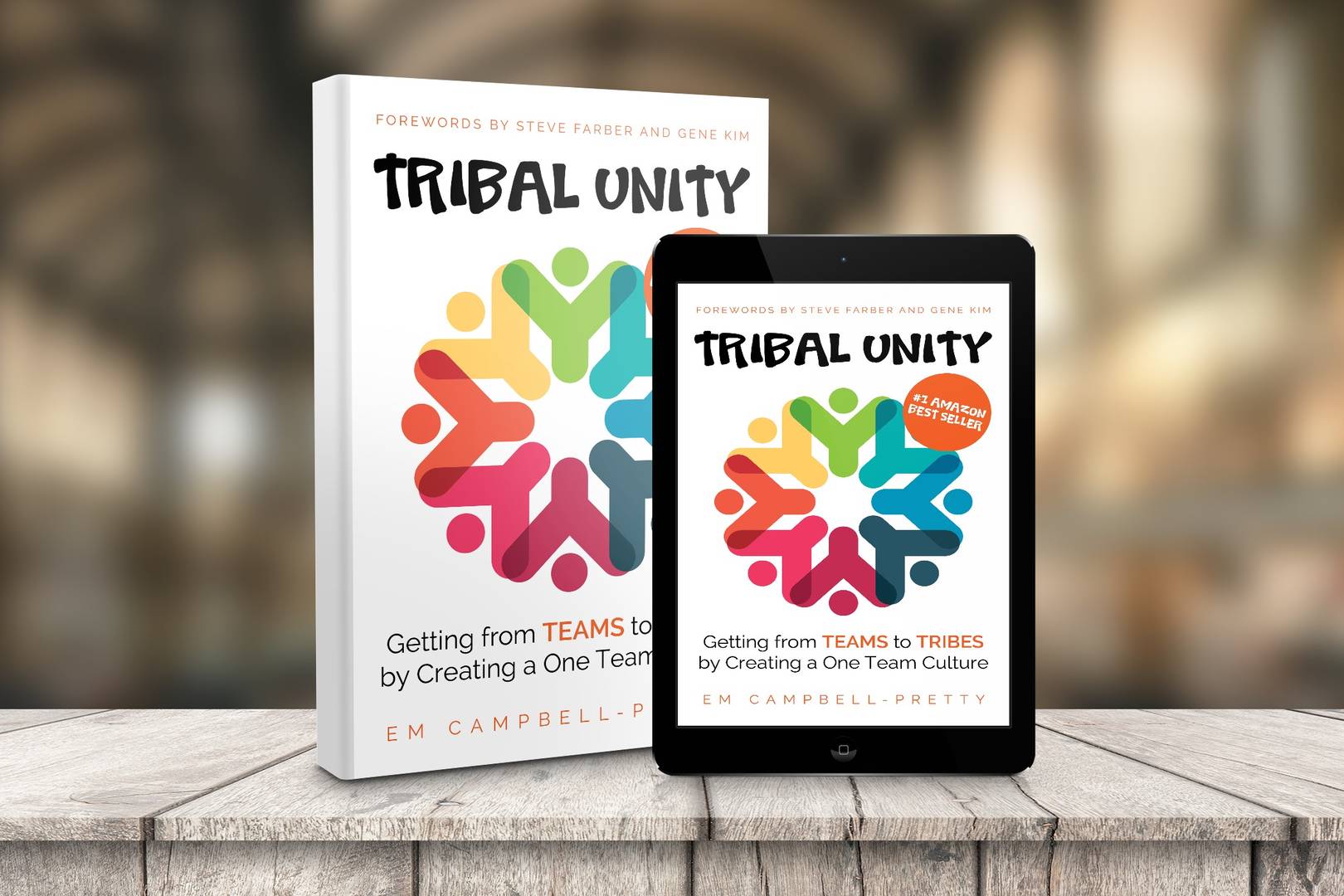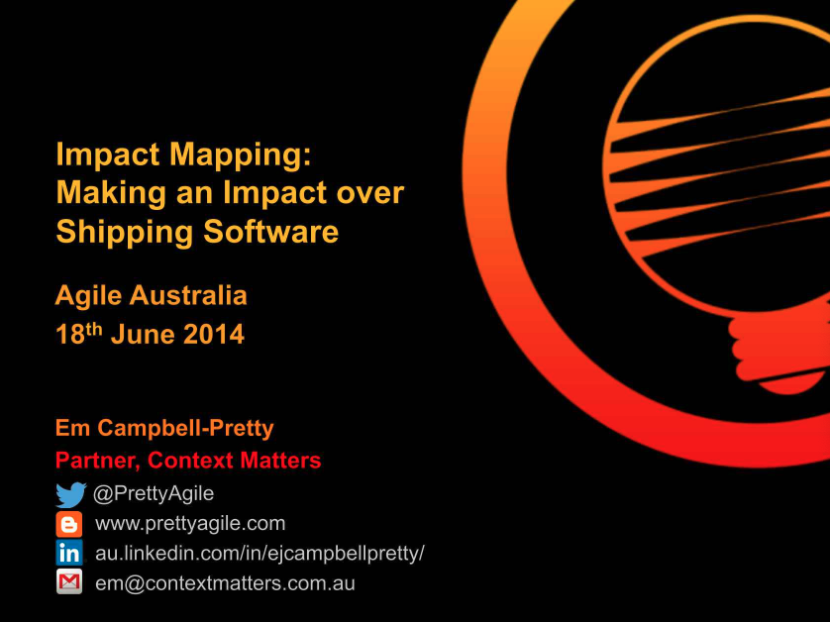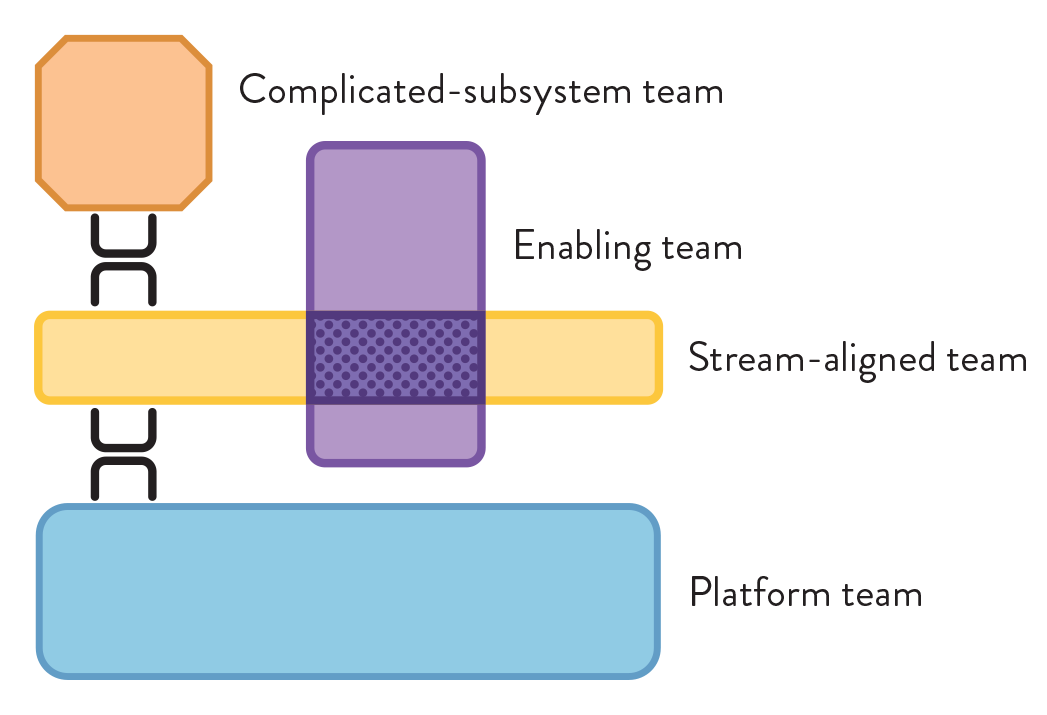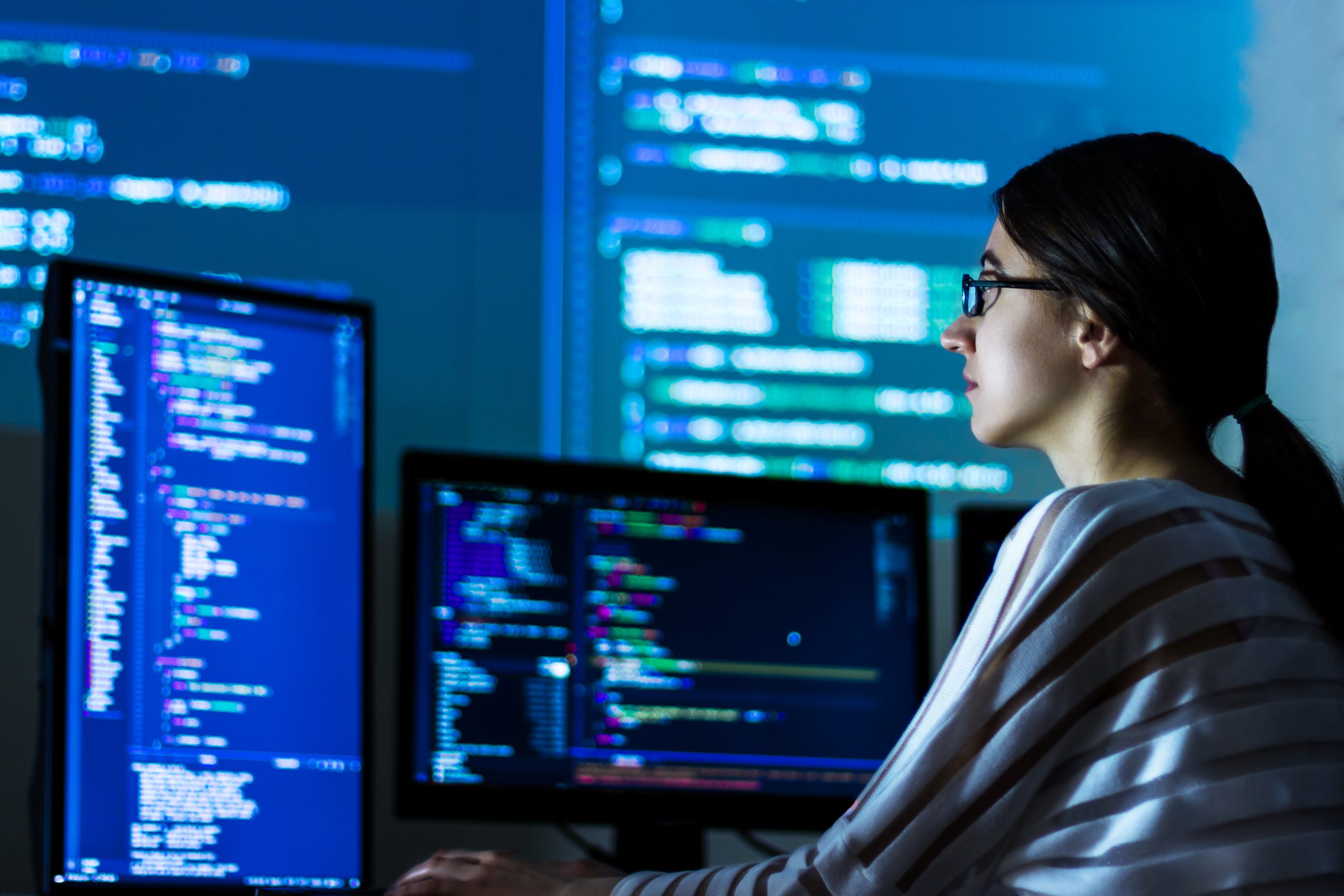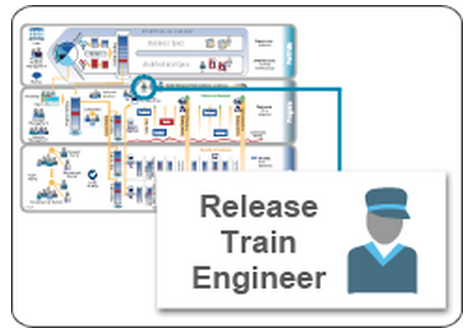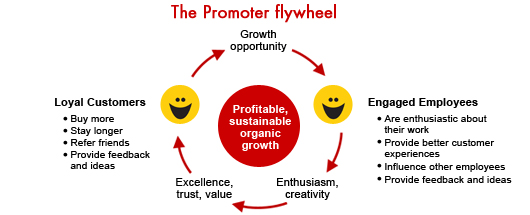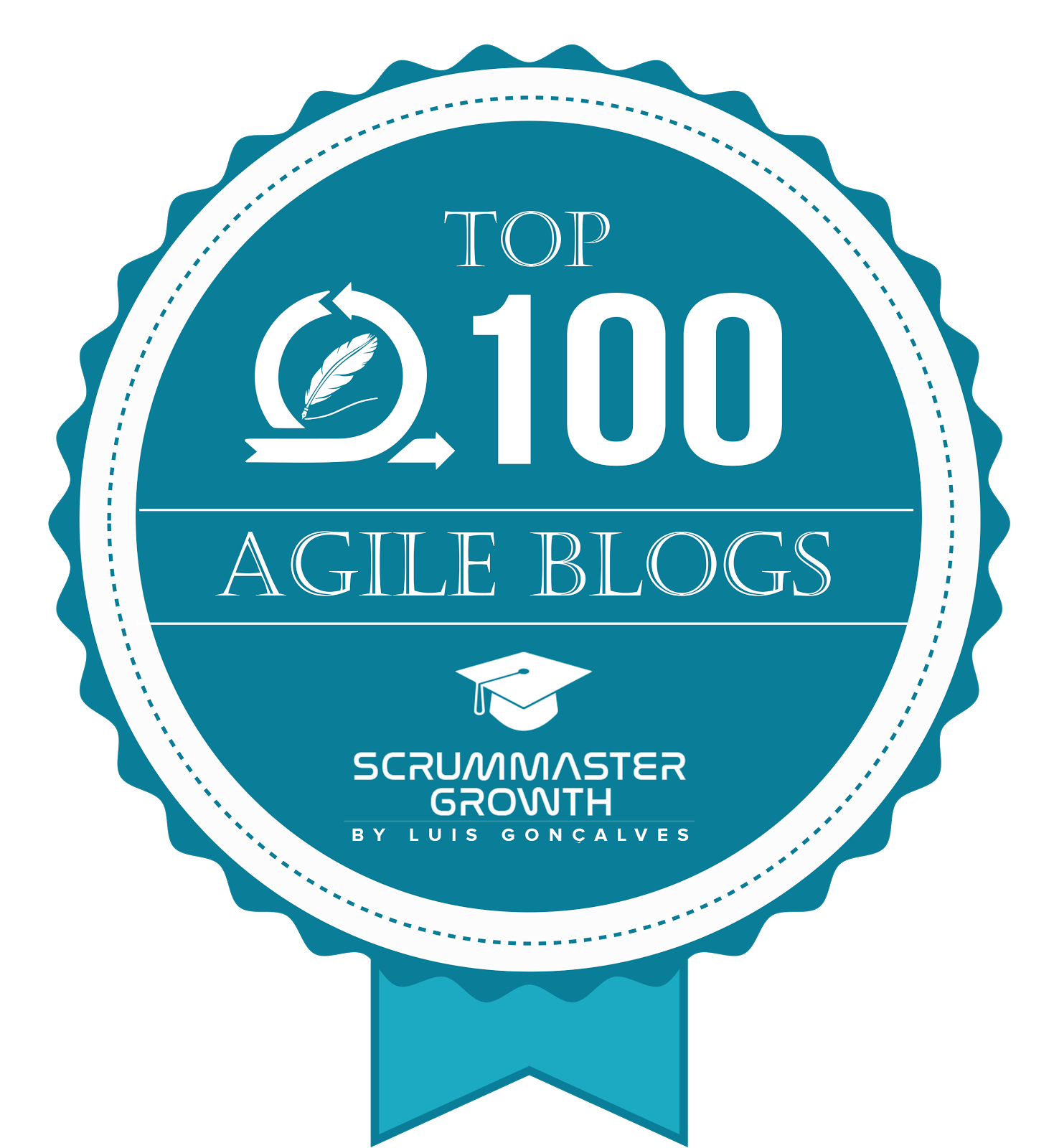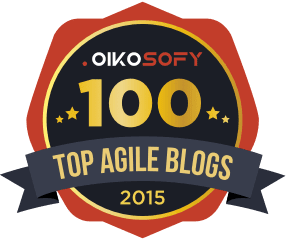- AI-Native Training
- SAFe Training
- Choose a Course
- Public Training Schedule
- SAFe Certifications
- Leading SAFe
- Implementing SAFe
- Advanced SAFe Practice Consultant
- Leading SAFe for Government
- SAFe Lean Portfolio Management
- SAFe Release Train Engineer
- SAFe for Hardware
- SAFe for Architects
- Agile Product Management
- SAFe Scrum Master
- Advanced Scrum Master
- SAFe DevOps
- SAFe Product Owner/Product Manager
- SAFe Agile Software Engineering
- SAFe for Teams
- SAFe Micro-credentials
- Agile HR Training
How Fletcher Building Implemented SAFe to Successfully Drive Digital Transformation
This is the story of how Fletcher Building partnered with Pretty Agile to implement Scaled Agile and rapidly launch multiple products across the group over the last four years to create market-leading omnichannel experiences and drive real value for the customer and the businesses.
Fletcher Building (FB) is one of New Zealand’s largest companies across both Australia and New Zealand. It consists of:
· six divisions and over 30 individual Business Units (BU’s)
· Over 8 billion dollars in revenue
· Over 14,500 employees
· Over 8 billion dollars in revenue
· Over 14,500 employees
In 2019 it had a minimal online presence, and it was a critical imperative that the Business Units start to build out a Digital / e-Commerce omni channel experiences for their customers.
From a technology perspective, the environment was very diverse, with minimal standardisation of technology solutions across the group (e.g. there are over 70 plus different ERP instances).
Therefore, the challenge Fletcher Building faced was how to build an e-Commerce platform that all BUs could leverage whilst retaining full branding capabilities for their service offerings while utilising agile ways of working to provide the velocity of change needed.
We were thrilled to host a powerhouse of leaders from Fletcher Building to discuss their journey in adopting SAFe! Check out the recording below to hear in their own words how this journey has progressed.
About the Speakers
Mark Phillips, GM of E-commerce, Fletcher Building
Mark looks after E-Commerce and Digital Customer Experience technology solutions across all of Fletcher Building's 20+ Business Units in Australia and New Zealand. Mark and his team have accelerated Fletcher Building’s digital transformation and successfully launched a number of innovative E-Commerce and Digital solutions for PlaceMakers, Mico, Tradelink and Laminex customers. He has helped to lead the successful implementation of the two scaled agile trains within Fletcher Building.
Amber McDougall, Head of CX + Digital Transformation at Laminex
As Head of CX + Digital Transformation, Amber Leads specialist Teams in CX + Digital Insights, Digital Experience, Digital Delivery and the CX Hub/ Contact Centre. She has diverse Leadership experience in Business Transformations across Retail, Energy, Banking, Insurance and Mining + Construction Industries.
With a new CX + Digital Transformation Strategy, Amber and her team are on a mission to make it easy for customers to do business with Laminex Australia, part of the Fletcher Building Group. They built an ambitious Roadmap through deep insights and partnered with Pretty Agile and Fletcher Building’s e-comm GM Mark Phillips to deliver the Roadmap features at speed through scaled agile. The Laminex Agile Release Train, led by Navine Smith National Digital Delivery, who was certified by Pretty Agile, delivered their first Program Increment at 100% to plan, with a new Mobile App and major e-comm upgrades in 10 weeks. Amber and the Laminex Leadership Team have been impressed with both Pretty Agile’s approach to Scaled Agile and the quality of the feature releases delivered on time and budget.
Wayne Armstrong, Head of Digital Channels at PlaceMakers
A recognised transformation expert, having successfully delivered customer-centred transformation programs across multiple verticals (finance, operations, supply chain, online) and geographies within large, complex legacy organisations
Ritesh Patel, GM of Digital & Transformation
Transcript
Em Campbell-Pretty: All right, good. Good morning folks. Welcome to the SAFe Australia Online meetup. I'm trying to figure [out] how long we've been doing this now, but a little while, a couple of years probably at least. This, of course, is a by-product of COVID. We used to have in-person meetups. People used to actually ask us to webstream them, and that was all too hard. And now we, of course, stream everything. Lovely to see so many familiar faces from various Pretty Agile classes. Thank you for joining us. And some meetup frequent flyers as well.
Today we are absolutely delighted to have the folks from Fletcher Building sharing their journey with us. Speaking of COVID, this was my last international trip before the borders closed in 2020. So their first train launch must have been the second week of March. And I remember flying home on Friday the 13th of March, and by the 16th of March, the borders were starting to close, and the world was starting to change. In fact, I actually haven't seen these folks in person since March 2020. It's as if they've turned into digital people.
Folks, we're going to let these guys run through their presentation. There will be time for questions at the end. If you drop your questions into the channel, we will read them through to the folks as we get to that section. And on that note, I think Mark, Ritesh, Wayne, [and] Amber, over to you to introduce yourselves and share your story with the group.
Introductions
Mark Phillips: Thanks, Em and Adrienne. And thank you for allowing us to share our story. We're pretty proud of it. We think it's a great story and we love to talk about it with the SAFe people. So we'll just do quick introductions. My name's Mark Phillips. I'm the GM of E-commerce. So I look after, from a technology side, all the build of our E-commerce and customer experience systems across Fletcher Building. I would like to introduce Ritesh Patel now.
Ritesh Patel: Hi, guys. Ritesh Patel, I'm the GM of Digital and Transformation for New Zealand division for Distribution. It includes brands like PlaceMakers, Mico and Frame & Truss, and TUMU.
Mark Phillips: Wayne.
Wayne Armstrong: Hey, team. Wayne Armstrong, I'm the head of digital channels. So, I'm responsible for the business side. So I have the product, UX team and also created around the change team as well to have a holistic solution.
Mark Phillips: And finally, Amber.
Amber McDougall: Thanks, Mark. Good morning everyone. Amber McDougall from Laminex. I'm the head of customer experience and digital transformation at Laminex Australia. That includes our contact centre or our customer experience hub, CX and Digital Insights, digital experience and digital product. Back to you, Mark.
Mark Phillips: Right. So, firstly we're just going to start off by explaining for the people that don't know Fletcher Building. What, who Fletcher Building is, what and who Fletcher Building is. It's a large portfolio company that operates in Australia and New Zealand. It sells and manufactures mainly building timber products. We also have a unit that builds houses in New Zealand. To give you some idea of scale, we're around about revenue of just over 8 billion, 14 000 employees. And being a portfolio company, we have 28 different business units that work across Australia and New Zealand. So it's quite a different model to a conglomerate.
The Challenge
So what was our challenge? 2019, the digital revenue across the group, so that's revenue that came through our digital platforms, was basically $0:00. Fletcher Building and, indeed, the industry is not known for digital adoption, but our challenge was our customers across the industry, were starting to demand it.
What we found is that the experiences they were having in their home life they were starting to demand from their vendors. So for us, being a B2B business, that's a key part of our journey, not B2C. We deal with builders, and so therefore, for them, being able to buy something is good. But what we found is it's not just a 'buy button'.
The key thing is around what we do for them is faster and more reliable deliveries. Most of our products go out through deliveries. They wanted to see innovative and customised solutions. So the way they remain loyal to us is if they can win business, and if we can help them win business, then they'll see us as valuable. Greater transparency; our guys work out on a building site, and one of the things is if you're relying on deliveries, you kind of want the deliveries to show up on time. You want to make sure that there's stock there.
Previously with our manual systems, no one really saw that. You had phone calls. Didn't you, Wayne? And sometimes, they'd show up, and sometimes they didn't. They wanted smarter and faster processes. So if you look at things like their small businesses, at night, they often do a lot of administration, such as matching invoices and balancing their books. What they started to demand from us, is instead of sending paper invoices out, we were very good with paper. In fact, that was our number one way that we used to talk to the customers was through paper. How much was it, Wayne? How much is the...
Wayne Armstrong: 22 million pages.
Mark Phillips: 22 million pages we used to send out in 2019. But, when you get that at home it's kind of hard to enter that into your accounting software. So they started to ask us for, "Can you send us our invoices and statements electronically?"
And value for money, this is the last part of the journey, and this is the part that we are starting to move into now. This is about how we can help them build quicker, manage their businesses better, [and] get new revenue. How can we start to give them value for money? How can we go beyond just being a merchant that provides them goods and services to really being a partner that drives value across them? So that's what we faced from a customer perspective.
Furthermore, what we found is our competitors, and I call out a couple there, Reece and Bunnings and Mitre10, were investing a lot in technology. And Fletcher Building really wasn't at that stage. So we were at real risk of falling behind our competitors, as they started to bring new and innovative technology to the customer experience. Challenging all of us, including PlaceMakers and Laminex, is the fact that our technology base was really old and decrepit. You can just have a look at some of those key metrics up there.
We've got about 72 ERP instances. The one for PlaceMakers is 28 years old. It didn't know about things like APIs, which you need to create modern E-comm systems at all. We've got about 144 edge systems, which include different transport management solutions as well. And we had no unified dataset. So one of the things we were thinking about when we thought about, especially PlaceMakers, is it's never really had a single view of the customer in its 27 years. So one of the first things we had to do, was think about what is the kind of product and customer data we needed. And then get that technology and processes in place, even before we begin to build out our e-commerce products.
So we were at a critical juncture. From a technology perspective, we needed to move away from the traditional approaches in Fletcher Building, which is very waterfall and siloed. That led to us a whole proliferation of different applications, which made everything really expensive. There was no opportunity to create leverage. So one of the key aspects we are looking to do across the group was to take the lessons from one and scale it out across the others. That's typically not what Fletcher Building did. And if we created a great customer experience over here, how could we create that across the group? And that's been one of the success stories for us. And we just had a success last week with contact centre implementation, that's done a lot of really cool stuff. That now will be implemented in Laminex and can be rolled out across the group. So we were at a real critical juncture in 2019, guys.
So the challenge we face is, how do we build an E-commerce platform that all BUs can share while retaining the full branding capabilities? So Fletcher Building, unfortunately, tends to have mixed views in our customer's minds, whereas our customers love PlaceMakers, they love Laminex, they love Firth, they love Wallboards. So how can we implement this within a portfolio company and, more importantly, utilising Agile ways of working to provide the real value and velocity that we need? That's really the focus of today's presentation. So 2019, that was our challenge. All those things there.
Rethinking our Approach
We had to rethink our approach to things across a number of areas. So we talked a lot about building capability. You hear people say to you, "we want to go fast." And they just say, "IT department, you've got to go fast." We've got to bring products fast. And that's all they say. But it's kind of like an athlete. In order to be a sprinter, there [are] a whole lot of things you have to do to create that speed. You've got to train, [and] you got to eat, you got to do a whole lot of different disciplines and approaches to get fast.
So when we talked about building capability, when we started this journey, we talked about speed, which is the ability to release to the customer quickly. We talked about agility, the ability to react to customer feedback and make changes. Reliability is critical. It's just a given that your systems are always up and performing as expected. But, that doesn't come from just thinking about [it]; you've actually got to build it in, and security. Nothing kills an e-commerce brand; nothing kills a brand in general nowadays, more than privacy hacks or security hacks. So we thought about how we were going to do that. One of the key things that was a difference, certainly, Wayne, Ritesh, and I had worked together for ten years and done some really good projects in PlaceMakers, but it was very much waterfall, and they were good projects, but it came with the limitations of waterfall.
We knew if we were going to win in this market, we had to accept uncertainty, we had to accept. We had to try, learn, and iterate. So to do this required us to consider all aspects of how we would build the solution from solution architecture, master data management, [and] technology choices, going with proven companies such as Salesforce and MuleSoft and SAP commerce cloud, working together with vendors. A key thing to win was the collaboration aspect—things like DevOps and our delivery method. And so, one of the key challenges... it's fair to say, in all the work that Wayne and Ritesh, and I did together with the traditional approaches to waterfall, "Oh, don't have time to change it", or "We have to do a CI", or "guaranteed dates". There's, there [are] times when we'd look at each other and go, "Oh my God, I'm not doing this again", or "This is very simple". We knew that wasn't going to work in an E-commerce world. And so we need to think [about] how we did things differently. That's where Scaled Agile came in.
So we're going to start off now talking about the PlaceMakers journey. So across Fletcher Building, we run two trains at the moment, but the first implementation in Scaled Agile was with PlaceMakers. So I just asked Ritesh, who was the person that first brought Scaled Agile to the table. Ritesh, how did you find out about Scaled Agile and why Scaled Agile?
Choosing the Scaled Agile Framework
Ritesh Patel: Thanks, Mark. It was actually [an] interesting journey three years ago. I came to a newly formed role of this GM Digital and Transformation. And the brief from the chief executive Bruce McKewen, was, "I want to transform at pace". Now Fletcher, as Mark mentioned, [is] traditionally very Waterfall. We tried Agile in various forms, one form or another. [It] didn't really take up or take off in terms of adoption in the business.
I came across Em's book, Tribal Unity. Ooh, that's quite [an] interesting concept. I read the book really to engage in the concept of PI Planning, what they spoke about, particularly culture, particularly innovation, around that whole concept, agility. And then decided to go to the course. So I went to a Pretty Agile training program in Sydney and was generally impressed. And from the moment I left the program, I knew this was the right thing for Fletcher Building. It solved a number of our issues that Mark mentioned. But also, what you haven't heard, is the business side which Wayne is going to share very shortly. Some of the frustrations we had dealing with technology teams, delivery of projects, [and] getting work done.
"So I went to a Pretty Agile training program in Sydney and was generally impressed. And from the moment I left the program, I knew this was the right thing for Fletcher Building."Ritesh Patel, GM of Digital & Transformation, Distribution, Fletcher Building
And it probably, for me, I guess what it showed me, was a way to align the business and IT teams together, was to really create empowered teams. One of the problems in waterfall and traditional approaches is very SteerCo heavy, very project management heavy, [and]very top-down decision making. This provided an opportunity to create empowered teams who knew the work, to deliver the work, and plan the work. And there's a different mindset and approach. And I guess, after the training program... to create any change, you need to enlist your key people. And Mark and Wayne were probably the key catalyst[s] in driving the change. But then we all... went to a course in Sydney... another Scaled Agile program. And by the time the course finished, both Mark and Wayne were convinced that this was the right approach for Fletcher Building.
And then, we flew in with Em and Adrienne. We took the entire PlaceMakers SLT leadership team on the Scaled Agile program. So now you had our whole leadership... buy into it. And at the end of the course, the conclusion was, yes, this is the right thing for PlaceMakers at that time, particularly, to transform. And that's been the journey. From there, we've invested heavily with Pretty Agile in terms of training. And I want to stress that the training was quite critical. One of the reasons why we went with Scaled Agile [is] because it provided clear pathways on what it means to be a good Product Owner, what it means to be a good Scrum Master, what it means to be a good RTE, what is DevOps; a lot of theory around that. But what it really is, it provided structured training programs. For a team which is not very mature at Agility, it created strong and clear pathways on how to build maturity, [and] how to build capability in a very short period of time. And from then, we launched our first train. So the journey for us from a Scaled Agile perspective all came from the brief from the Chief Executive to transform at pace.
"We took the entire PlaceMakers SLT leadership team on the Scaled Agile program. So now you had our whole leadership .. buy into it. And at the end of the course, the conclusion was, yes, this is the right thing for PlaceMakers..."Ritesh Patel, GM of Digital & Transformation, Distribution, Fletcher Build
Mark Phillips: So Wayne, how about we just pick up there and you just talk about as Ritesh says, the product side. So Wayne and I worked really closely together. Wayne is obviously was a business owner for a lot of projects, so I did the delivery side of it. So Wayne, how did you see Scaled Agile? How'd you go about putting together your product team?
Putting the Product Team in Place
Wayne Armstrong: Yeah, thanks. So I guess I'll probably just take a step back and let's talk about what we used to talk about at SteerCo, which was time, cost, budget. They were making trade-offs. Everything went long, everything was late, everything was a problem. It took a long time to do anything from a business perspective. And I guess the main highlight for me now is that we don't have any of those conversations anymore. It's a conversation around what are the key things we need to do as a business and what value is that going to create, and allows me, from a business perspective, to really focus on how I effect change and drive that through the business, rather than, what's... where's my deliverable? Is it going to be late?
"Everything went long, everything was late, everything was a problem. It took a long time to do anything from a business perspective. And I guess the main highlight for me now is that we don't have any of those conversations anymore."Wayne Armstrong, Head of Digital Channels at PlaceMakers
That key change came about with bringing the business and the IT teams together. Mark and I always worked really closely together, but what Scaled Agile did, was enable us to create a product team. So we created and launched that. We moved all the business analysts because we wanted [to] actually think about how we drive business outcomes and benefits through that team. And we created our own UX function as well. So it gave us the opportunity to think, well, more from a customer perspective. What are we trying to do? How are we solving their pain points, and how do we align around that? And then how do we bring the rest of the business on the journey?
So from a PlaceMakers perspective, it really was a transformation journey using Scaled Agile on the technology piece. But it was also a huge piece on the business side because, obviously, we're moving from a waterfall world where we would say on March the 17th, we are going to deliver this system X, and we'll go out and train it. The new ways of working is every four to six weeks would have a major release. So we fundamentally changed the velocity of the program for the better, but it also created the need for us to communicate that change with our staff and our customers.
I remember a conversation we had with Adrienne and Em in our first planning session; I said, "What would we do with [Business] Change?" And they said, "Just bring them on the train." And so, that created our first cross-functional business team with marketing, operations, digital team, [and] digital support, all working together to take the great technology [and] to convince people that it's actually a good thing to use it. We do work in the construction industry, not known for its digital adoption. In fact, it's usually at the bottom left-hand corner of any digital adoption side on the known planet. And so, one of the key reasons we're successful is taking that cross-functional approach.
We've since then taken that through the rest of the business and multiple kinds of programs of work, additional work that I've started up and within business areas themselves. So that kind of approach around dedicated people, organising around a single team looking for a business outcome, has really transformed how we run our business as well. So, it has been great.
"I remember a conversation we had with Adrienne and Em, in our first planning session, I said, "what would we do with [Business] Change?" And they said, "just bring them on the train." And so, that created our first cross-functional business team with marketing, operations, digital team, digital support, all working together to take the great technology, [and] to convince people that, it's actually a good thing to use it."Wayne Armstrong, Head of Digital Channels at PlaceMakers
Launching the First Agile Release Train at Fletcher Building
Mark Phillips: Just picking up what Wayne said, one of the key things is we started to use SAFe as a delivery method beyond E-commerce. So we had a bunch of enhancements we wanted to do on the legacy ERP; we called it Project Zero. And so what we did is it's not strictly part of the program, but we put it on the train and started to use a cadence in the management side around it.
I think the other key thing that stood out for us is that SAFe gave you the rules of the game and where everyone should play. One of the key lessons we've learned in the past, and it's still something we have to be vigilant on, is everyone's got their part to play. You can have - if I was to use a rugby analogy, you can have the best halfback in the world, but if you put them in the scrum, they'll be pretty hopeless at that point.
So the SAFe method and certainly Em and Adrienne's, shall we say strictness, directness, loving help, to make sure that we all play in position, has been critical to us. So when we join up the technology side of it, the key lesson for us, for PlaceMakers, is we had to overcome that technical debt that I alluded to before. And then we had to come up with innovative ways, and this is where Adrienne gave us a lot of feedback around things like DevOps that, we kind of dabbled in, but hadn't really approached it. And continuous delivery and continuous integration is more of a state of mind at times than it is a technology piece.
"So the SAFe method and certainly Em and Adrienne's, shall we say strictness, directness, loving help, to make sure that we all play in position, has been critical to us."Mark Phillips, GM of E-commerce, Fletcher Building
We had to change the way that Fletcher Building did releases. Typically, in the past, we go to CAB with major releases. So then we had to move to delegated releases so that I had the authority to release as and when. And... Wayne will share some metrics with you later. Typically, with the waterfall approach, we do one release every six months. Now, we do an average [of] one release every three weeks for PlaceMakers. And if you add up across Fletcher Building, last week, for example, we did four releases across both trains. So it's really improved the velocity of it.
"Typically, with the waterfall approach, we do one release every six months. Now, we do an average [of] one release every three weeks for PlaceMakers. And if you add up across Fletcher Building, last week, for example, we did four releases across both trains. So it's really improved the velocity of it."Mark Phillips, GM of E-commerce, Fletcher Building
I just want to share a challenge with us, [it] is a really interesting challenge. We did all this training with Em and Adrienne, and everything was about being on-site, and we're all like, we're looking forward to this. And then COVID hit. And I remember there was a meeting between Paul, Ritesh, myself, Wayne and Prashant in Pretty Agile about... what do we do now? You guys keep saying everything has to be onsite, and here we are now...
Ritesh Patel: But we challenged that. I remember Em, the conversations I had with you about going remotely. And guess what? Your whole business model now is remote. There you go. I proved you wrong there!
Key Success Factors for the First ART Launch
Mark Phillips: So for Fletcher Building it was definitely... it was a challenging time. But, I think some of the strengths that came through, if we reflect on it;
1. Was the training of Pretty Agile giving us the discipline around it. I think that was really important.
2. The pragmatic, practical support. Yes, it's direct, but it's always coming from the right place. And,
3. The teamwork. SAFe is a team game. E-commerce is a team game. Those rules and that collaboration really helped us.
I think the leadership team from PlaceMakers embraced that challenge. I remember us going, all right, we're just going to have to get on and just deal with it. And that's a fantastic story for us. It was critical to PlaceMakers response during COVID. We launched an app to manage the rules around how we were in essential service, [and] how customers could engage with us. And that wouldn't have been possible without it.
So just in terms of performance Wayne, what are the key highlights to you?
Results from the First Agile Release Train
Wayne Armstrong: So we've mentioned our 22 million pages of paper before, so that's now down to under 9 million. So we saved just over 1/2 million dollars on printing and paper alone. So it gives you an understanding that we've moved from totally manual processes. We're now doing $1.5 million digital transactions. We are sending out one and a half million advanced notifications to our customers. They come through onto the Trade App through deep linking. We're now 40% down in phone calls taken, which is around about 1.5 million phone calls down. As a result, over 40% of our customers use our Trade App and trade portal every month, doing over 160 000 sessions a month. Now we created a hundred-million-dollar channel to market that we didn't have before.
So all in all, our customer is really happy with what we're doing. They're using our tools on a regular basis, [and] they are self-serving, which is reduced work for the team. We've evolved the program from our digital tools like Mark said; we've just launched our new contact centre for the people on the phone, and then we're going to launch an improvement to our sales CRM system in a few months. So programs are continually evolving over that time.
Expanding with the Second Agile Release Train
Mark Phillips: So now I'd like to pivot and talk about Laminex. So Laminex Ritesh used to be the GM of IT for Laminex, so he likes to claim credit for this as well. [laughter]
Mark Phillips: Laminex was the first E-commerce implementation for Fletcher Building, the first serious one, and it'd been running for a while. Amber... when did you come in, Amber?
Amber McDougall: I started with Laminex in the transformation side [in] 2019 and then moved into the digital space in January 2022. So certainly standing on a few shoulders where there'd been... three years of E-comm development.
Mark Phillips: Yeah, so it's a really interesting piece because Laminex have been quite successful, but it was done in a very waterfall way and traditional business cases, mobilisations. And Amber, when you really came in, we've seen the pivot now to running Scaled Agile. So I suppose one of the questions it would be good for you to help provide some light on is, why use Scaled Agile? What drove you that way?
Amber McDougall: Yeah, thanks, Mark. So just a bit of background, too, for everyone. We are a manufacturer; we are an Australian manufacturer... it's a privilege and an honour to work for an Australian manufacturer. It's also really tough, right? And we have a bias for action in our culture. But what we were really looking for was velocity of cash and value creation to keep our head above water, particularly through COVID. But, really, just on an annual basis in manufacturing, with all the input costs going sky-high. And so our objective was about speed, but it was also about flexibility and about rapid feature releases that we could generate release to market. It was also actually taking the handbrake off the funding model. I noticed that there's a question in the chat about value-based funding. Yes, we were waterfall. So Laminex had developed quite a great, really good E-commerce platform and a good engagement with our trade customers. About 40% of our trade customers are active on our E-comm platform.
But really, what we were wanting to move to, was sort of beyond that to mobile apps. We'd seen Ritesh and the team over in New Zealand with Mark develop some really beautiful mobile apps that we wanted to learn about because our customers are tradies on the go. And we believed that was going to really meet their needs and reduce pain points. It also, for us, we had been operating under waterfall, so not only did we have that kind of Waterfall business case funding model where it was stop/start, stop/start for every individual project, and then having to pull together individual teams, project teams, IT, business teams.
Business Results from the Second ART
So what the Scaled Agile approach has delivered for us is just one overall funding model approach. And then we've got the collaborative teams, which is broader than what the Laminex team had been operating under. There'd been a small product team and a digital experience team operating very successfully. And then there was really that next layer of development to get the Pretty Agile disciplines to really scale up their capability, to lead more specifically with New Zealand, to collaborate with New Zealand, and with all the developers, software engineers, Scrum Masters, to deliver larger projects faster.
We were delighted that the team were able in their first program increment, to deliver an MVP mobile app in 10 weeks, which, based on my prior experience in retail, is market speed. We never thought we would pull that off. So the team have learned a lot from Mark and Ritesh, and Wayne, and we continue to develop and learn. But we have got some big goals. We are turning over $250 million on our digital e-comm platform. We want to double our digital sales over the next couple of years. So we've got a very big goal. But I feel now that we've actually got this engine, that's going to help us really grow categories, grow digital solutions, that are going to help us survive as a manufacturer in Australia, and really win more customers back.
Mark Phillips: It just to give you some idea around the speed there... Laminex the previous year, to just get sort of two features done, took the entire 12 months because you have to write a business case and go through their approvals and then mobilising and all that. The one business case has been a game changer for Amber and the teams; we are just motoring through.
The other key call-out around Laminex's journey is very similar to PlaceMakers. The train includes, as Wayne alluded to, not just the product side, but the marketing team and the change team, are all part of the train for Australia. And just in terms of the performance, leveraging the experience across Distribution, their second PI was at a 100% predictability, which is amazing. Certainly, with PlaceMakers, we thought we did really good with 70%. And we've seen the Australian train take those lessons standing on the shoulders of giants of these two here in the room, I would suggest, and taking those lessons and "baking them in" across the group.
That, to us, is a really good illustration around how we've taken the lessons from PlaceMakers. And across a large organisation, apply them to a different area. And remember, it's a portfolio, so it's not a conglomerate. We had to sell them on the story, and with Amber and her team's help, we've helped to make that a success and drive real value for the customers.
Overall Business Benefits of Scaled Agile at Fletcher Building
Mark Phillips: So I'll just move on now, just talk a little bit about our performance and how we've gone. The move to Scaled Agile since 2019 has really exceeded Fletcher Building's expectations.
Quicker to Market
We are quicker to market. Amber talked about the speed of developing the mobile app. That mobile app was developed off the original PlaceMakers coding and approach. So by centralising on our reference technology and using the same vendors, [and] the same techniques, we've found ourselves every time we build an app, we're quicker. PlaceMakers took a long time. Mico and Tradelink took half that time, and Laminex has taken half that time again, as well as cost.
Revenue Growth
You've heard Wayne and Amber talk about the revenue growth. Remember, in 2019, it was zero. So this growth has been happening for just over four years now.
Better Quality
Better quality and this talks to the product ownership mindset that Scaled Agile introduced. When we look at our CSAT scores for our quality, we see they're over 90% in our products, and that's really market-leading around there. And that's one of the key things about Scaled Agile, as Wayne alluded to, really puts the focus on the product ownership team to start looking for where is the value, [and] where are the pain points? And that drives the quality in, because ultimately it's the customers that are most important.
Speed & Agility
In speed and agility, in that, we found at times we've been able to react to customers quickly. But the big one is COVID. In the middle of COVID, we had to pivot three or four times in order to meet government regulations. Our competitors never got near us because we had a dedicated team.
Phenomenal Growth
So, in short, if you look at how Scaled Agile helped supercharge our transformation across Fletcher Building. There's phenomenal growth in both the number and quality of E-commerce offerings that we have. 2019 you just had Laminex; now we've got over 12 portals and apps running and more coming. And, ultimately, it's about the customers. And what we are seeing is the customers love what we're doing, they're voting with their engagement, they're voting with their revenue for us and it's really sort of transformed us. So 2019 it was $0, 2022 it was $300 million +.
PlaceMakers SAFe Metrics
Mark Phillips: And just some vanity metrics for SAFe to round up before we get to questions. This is a little bit outdated, but 92% of our customers rate the Trade Portal as great or/and amazing. This is for PlaceMakers. Only three months between the Trade App and the Portal launch; releases every three weeks, four times faster than traditional waterfall for us. I had to hide the revenue number because we don't give out exact numbers. And the team engagement, which is another key thing, is above 98%.
There we go Em, that's our story.
Em Campbell-Pretty: Thank you very much, folks. It's an awesome story, and it's been awesome to be a part of.
Q&A
Em Campbell-Pretty: I saw Jeff had a question around value stream funding, and Amber spoke to that a little bit as well. I don't know if you've seen the question there, Mark, if you had anything to add from the New Zealand side. But the question was initially posed as, "Were you able to move to value stream funding of the ART?" And if so, can you provide any learnings on how that move to funding went? And, any key items on capex without value stream funding? I know, big question Mark. Don't know what you guys have to add there.
Mark Phillips: Yeah, I think I've got two people here that are very keen to answer that question.
Em Campbell-Pretty: Okay, awesome. Go for it then.
Ritesh Patel: I think what's important is the pretext to the transformation was the strategy presentation of digital to the execs. That was quite clear that this is a multi-year program that required X number of funding dollars across three years. So from the outset, we made it really clear that this is a multi-year program with buckets of CapEx, which will decline over time, but quite substantive. So that created the framework and the licence for the teams to start planning on what the buckets were to work on the funding model. And I'll pass it to Wayne on how we actually did that.
Wayne Armstrong: Yeah, And so I guess that's a really important distinction between running a program and a project. And that was part of the journey, helping people understand that. To be fair, we still have a little bit of [a] challenge with finance every now and again. Trying to think that way because you're taking quite a traditional business with normal ROI, to this new way of working. But, it's all about how you sell the future, and that, it's actually a more guaranteed funding model looking at people. What we had before was that you'd run a project, all the different technology pieces would come in, take three days to do this, two days to do this, four days to do that. But of course, it was always more because [of] the context switching between the teams. And then that was part of the sell like this is the reality of where we actually are. We're spending this amount of money, we're actually spending it already, but the results we getting are great. And so here's the value proposition on the other side.
Ritesh Patel: So it was with this project funding model to product-based funding model, long-term sustainable.
Wayne Armstrong: Yeah.
Mark Phillips: And that's certainly been the experience of Laminex. Hasn't it been... Amber? When we applied for funding this year, is taking it to the Chief Executive and CFO and talk about a long-term capability in play in that, as opposed to a project-by-project?
Amber McDougall: Yeah, absolutely, Mark, always in the context of the business transformation, the business goals and the NPS improvement for customers as well, removing the pain points, et cetera, the things that were holding us back. So yes, very much the broader transformation agenda. And then, the annual CapEx case was just the one thing we needed to do, which was significantly less than the cases before.
Ritesh Patel: The key thing with the funding, value funding is, the Execs need confidence on delivery, and they need confidence on business outcomes. So what Scaled Agile does, sort of takes away the question of confidence and delivery, then you do PI planning, you do iteration reviews. It sort of gives confidence to what you're going to get at the end of the PI. And then the challenge becomes the business change program which you run to get the numbers and metrics we [were] chasing.
Wayne Armstrong: Yeah. But the way we started Fletcher Building is, we started small, with PlaceMakers small. So, it was still a reasonable program. And everybody was looking at it to see whether it was successful or not. So I think everybody got confidence when they actually saw what actually happened. And then the PI planning, the iteration reviews, where you can bring in the Execs. They can see and touch and feel what you are doing, and then you can show that progress over time as you are building capability through those cross-functional business teams as well as the technology delivery.
Mark Phillips: Yeah, the predictability is critical, guys. That's all Execs want. They know that... when, if I put the money in, am I going to get the product? That's the first part. Predictability is key, and then, where [are] the benefits? As Wayne says that predictability leads on to the ability to create the benefits.
Next question, Em?
Adrienne Wilson: Listening to your story, which is fantastic. Beyond the business results... Which I imagine maybe was surprising to you... the trajectory that you ended up on and where you landed.... Were there other, other non-tangible things, or were there other surprises in your journey? Fletcher Building, you're on PI 13, Laminex you are now in PI 2. Is there anything in this journey that surprised you beyond the business results, which are amazing? From each of your perspectives.
Mark Phillips: Well yeah, I think one of the key ones, guys, is the culture of the team. I think if it's done well with the right leadership... I can see there are some of our teams on the call. I think we paid them to attend to bump the numbers up and make sure they give us a good survey at the end. But, what's been really surprising is really the culture of the team and the fun that the team have the creativity. I think that's been one of the key great non-tangible outcomes that have come from that. Wayne?
"...what's been really surprising is really the culture of the team and the fun that the team have the creativity. I think that's been one of the key great non-tangible outcomes..."Mark Phillips, GM of E-commerce, Fletcher Building
Wayne Armstrong: Yeah, it all comes back to people. So for me, when we went on that first course, and I saw that we were going to enable people to be dedicated, focused... focused on an outcome as a group. I knew it was going to be good, right? But what I didn't know was how good it could get. And the culture within, the productivity within the business teams and the culture within their own teams. And we do... quite a bit of outsourcing to the subcontinent, which was another topic of conversation between Adrienne and Em. But they really focused on making sure that they're just part of the team. It doesn't really matter to us what partners we have; they're just part of the PlaceMakers team and the journey. And seeing those people develop and grow, move on to other things, get promotions, those are the things that actually, to be honest, really make me happy about the journey that we chose to go on all those years ago.
It doesn't really matter to us what partners we have; they're just part of the PlaceMakers team and the journey. And seeing those people develop and grow, move on to other things, get promotions, those are the things that actually, to be honest, really make me happy about the journey that we chose to go on all those years ago.Wayne Armstrong, Head of Digital Channels at PlaceMakers
Mark Phillips: Ritesh?
Ritesh Patel: Very similar sentiment. I guess for me... when you try and transform an organisation... and when you're accountable for results as most GMs are, what bets do you play? Do you outsource the whole thing? Do you build internal capability? Do you partner? And I guess we sort of use[d] a hybrid model, but we kept our same people. Again, I guess with the same framework, structure, [and] training provided, the same people grew it. There's a quote in the Scaled Agile book somewhere, and I remember reading it quite well, but Deming saying: "As leaders, we are responsible for creating systems and structures for people to perform at their best." And that's our responsibility. So we can't blame [if] employee X is not doing well, [or] not doing Y? It is our job as leaders to create those systems and structures. And I guess... what I didn't expect from the program is the systems and structures which we created, the SAFe methodology, created an environment for people. And we've seen people grow.
But more so, we've seen partners plug into the system Easily. So external vendors, we've got teams in Chennai, Bangalore, Karachi, [and] across the world working with us to deliver what we need from a product perspective. And, all of them had bought in and aligned with the model of delivery we have. But more so, they're all happy and having fun, which is fantastic.
Mark Phillips: Yeah. Amber, you are new to the journey... What [are] your initial observations?
Amber McDougall: Yeah, certainly, we would echo what's been happening with the PlaceMakers and New Zealand teams in that [the] uplift in employee engagement has been considerable. But I would really like to talk about customers.
What we've done is we've involved our customers in this journey. So we have a customer panel, and I go on the road and talk with customers, gather the pain points, and then we really work with the customers as the teams are building the features. So the digital product team that are on the Agile Release Train, will do some live troubleshooting with customers. And even our number one customer in Australia was quite unhappy about a number of experiences. They're now saying that they've never felt so heard and so engaged with our business and so involved with building the solutions. We've had many, many cases of customers being absolutely thrilled that we're working this way, and for them, they can actually see the outcomes of their input and feedback to us quite quickly.
"...our number one customer in Australia was quite unhappy about a number of experiences. They're now saying that they've never felt so heard and so engaged with our business and so involved with building the solutions. We've had many, many cases of customers being absolutely thrilled that we're working this way, and for them, they can actually see the outcomes of their input and feedback to us quite quickly."Amber McDougall, Head of CX + Digital Transformation at Laminex
Mark Phillips: I noticed there are a couple of questions around technology that I'll just lump together. How important is the move to DevOps and automated testing?... DevOps has been great. Now I tended to focus on the old technology which we do have a lot of, which makes it hard to do a DevOps model. But, everything else has been... We've set up our DevOps pipeline to all our new technology. So if you move to modern technology, it's a very easy thing to do. We found that to be fantastic, but not necessarily in the way you think. I certainly had an immature approach, and [when] we looked at DevOps, I thought it was going to save someone checking out the code, deploying the code, that kind of stuff. We've got an uptime of 99.9?ross Fletcher Building. We do releases... as I said, we did three releases last week. So the stuff that we build is quality. And, you can see that both in the customer outcome, but more importantly, in the reliability. And what we've found, is the adoption of the DevOps pipelines, removing all [those] human mistakes and making sure the environments are all in sync, has been an absolute foundation for us, which Adrienne would remind me constantly when we started this journey.
"So the stuff that we build is quality. And, you can see that both in the customer outcome, but more importantly, in the reliability... the adoption of the DevOps pipelines, removing all [those] human mistakes and making sure the environments are all in sync, has been an absolute foundation for us..."Mark Phillips, GM of E-commerce, Fletcher Building
Automated testing. We do a lot of automated testing. I'd say we've made really good progress, but there's still a bit to go. And that's really around taking the automated testing but then automated environment refresh, so that you can do things like create orders and back them out again and so forth. But, that's certainly been a great enabler in reducing our regression times.
And as far as the last point around IT organisation on board, one thing that Ritesh drove really hard, was getting the... you talked about having the business leadership along for that initial Scaled Agile training. We also had the group technology leadership along. And, under their leadership, they allowed us to set this up. It's really important you stay connected with the wider IT team. We don't do, for example, firewalls and server ops and stuff like that unless we need to for a feature. So you can't sort of treat yourself as a separate unit. That's a bad mistake.
The old skunk works, Apple, Mac, Steve Jobs story where they're off to the side poo-pooing everyone that doesn't work. We're part of a larger organisation. So the key thing is, how do you create an environment [in] which you can stand up a team like we have done? But also bring the wider GT team along and then start to scale out that transformation across the group, just like with the business. And the techniques that we use are modern E-commerce techniques. There are modern technology techniques now. In the E-commerce space, everyone runs Agile; hardly anyone runs Waterfall anymore. So, these are the main streams.
Ritesh Patel: Just to add to that, my previous role at Fletcher was a GM and I had a team, digital features team. And I've seen Agile fail, but more so, Agile discouraged and talked down upon within circles of GT. So we've come from a place where we tried Agile in various practices. Again, the whole "to-the-side" and a team there and really... it didn't get traction in the IT leadership, didn't get traction in the business, and it was a pretty poor experience.
And I guess what's different about the Scaled Agile approach, and I've reflected [on] why all those elements failed. It was mainly Scrum, Kanban to a point, but didn't really provide enterprise capability, enterprise thinking [or] how to Scale Agile from a small team to multiple teams. All the frameworks weren't there. When we bought in Scale Agile, we bought in an enterprise Agile Framework, which was not just scaling one team but scaling the entire organisation. And we also started this from the business end, which provided some credibility that this is probably a way which the business would want to move forward. So it wasn't a technology transformation project; it was a business transformation project which helped align [a] number of teams and the IT leadership together.
"When we bought in Scale Agile, we bought in an enterprise Agile Framework, which was not just scaling one team but scaling the entire organisation."Ritesh Patel, GM of Digital & Transformation, Distribution, Fletcher Building
Mark Phillips: That's a great little segue to that last question I can see down there, which is great insight and outcomes. The biggest challenges you had to overcome from a wider organisation perspective.
So, Fletcher Building as we mentioned before, is a portfolio company, each division has its own P&L, its own executive. So it's a sell, not tell. You...think about some large conglomerates like Woollies... from the top, they can go, you're doing this, and everyone has to fall in line. And in Fletcher Building, we need to be able to sell the story. So some of the challenges, I think... so we've talked a bit about the funding model. I think culturally, getting people on board both within technology and also in the wider business.
Wayne Armstrong: Yeah... so that's from a Fletcher Building perspective. From a PlaceMakers perspective, it's really how do you bring our 2,500 staff and our 20-30,000 customers along the journey. So we haven't talked too much about that. But, there was a huge effort in how we engage with them. We've created a digital leadership program to take the business leadership along the journey. What are the problems that it solves for them? What are the problems that it solves for our customers? Where are we going as a business? How do we let them create their own plans? Utilise the tools that we were doing. And in most of our programs before that, we've only really talked about internal change rather than external change to our customers. So we were moving from changing 2,500 to 20 000 people in an industry that's used to people walking into our branches with bits written on pieces of timber. So that's the reality.
So you've really got to think about how you are changing those people. What are the structures you have in place? How do you support them? How do you drive change through in-store activations? Customer promotions, staff incentives, bringing people... just like Amber's talking, sneak peaks, user groups, demos like webinars, the journey on your website, how you're selling a story. So there's a huge amount of work that we put into that piece. But the only reason we were able to do that...from a business side is that the technology system was so reliable, and we knew what was coming down the line, and we did a lot more work upfront. The other piece that really makes a difference is the continual discovery alongside of development. And that's been the reason we've been able to step change that number of releases, those continuous improvements and the ability to meet those customer requests, and then people go, "Oh actually yeah, that wasn't working, but now it is!"
"The other piece that really makes a difference is the continual discovery alongside of development. And that's been the reason we've been able to step change that number of releases, those continuous improvements and the ability to meet those customer requests..."Wayne Armstrong, Head of Digital Channels at PlaceMakers
Ritesh Patel: It's actually interesting that the question there... our biggest challenges. I don't think you should start a digital program with an Agile program or SAFe program. I think what's really important in the beginning is you have a really strong digital strategy that includes your customer, competitor set, market... it's a business transformation with business results. And underneath that, you plug in your SAFe Agile practices, your teams, et cetera. Otherwise, it's... the-cart-leading-the-horse. So it doesn't work. So digital strategy is probably the key enabler and your digital strategy needs to be co-created with your leadership team, the members of the SLT. If you're a portfolio business, then you need to get your portfolio execs also involved in that. And that creates a lot of alignment, which unblocks a lot of the concerns in... undergoing [a] multiple multi-year transformation program.
Mark Phillips: Right. And I think that SAFe, SAFe starts with value streams, which I remember early on; Em and Adrienne had to teach us on value streams because we thought we knew. But that focus on a value stream which is a business outcome, provides you a true north across the teams. And that's really important. And I'll just reinforce what the guys said. If you have the technology team driving, stepping into the business area and driving features, that doesn't work. If you have the product owners telling the technology team how to do stuff, that doesn't work either. And that's the great nature that's really come through when we talked about surprising things: the rules of the game and the collaboration and, therefore, the creativity we get out of it.
Don't know if there's any other questions in that stand out to you?
Em Campbell-Pretty: There was a question about OKRs... do you guys use OKRs?
Wayne Armstrong: Yes, slightly different format, but yeah.
Em Campbell-Pretty: And any lessons learned on OKRs and SAFe..?
Wayne Armstrong: Like Ritesh said, we went into the program knowing what we needed to achieve. We had a business case signed up, a multi-year program with multi-year targets across revenue, customer usage. And we brought that all the way down to transactions... so that we had a really clear view of how we were going to win. We'd done a lot of work around customers where the pains and gains are, a lot of human-centred design work through that. So we're really clear on the pains we're going to do, how we were going to win and what the results were going to look like.
And then what that enables you to do, is really organise your teams around the tactics you're going to employ in order to get those results. And what we found was we over-drove those results. So we hit our year three targets halfway through year two. So we were about a year and 50?ster through our targets than what we were planning on. But there was a lot of work. But like Ritesh says, it's a holistic change program. It's not just about "the technology".
Mark Phillips: Yeah, and you can see that. Amber... as you mentioned before, the growth that you're seeing, both in the growth of the customer revenue. But also in the features and everything, Amber, that's driving that, isn't it? You're seeing that same over-performance.
Amber McDougall: Absolutely. And really strong alignment with our internal sales teams because... back to Wayne's point about positioning the change, what's in it for them. With the sales team, it's about unburdening them from a lot of transactional admin, claims work and enabling them to really work more strategically with our customers. And as soon as we started removing the pain points for the sales teams, they're obviously the biggest advocates to get customer adoption as well. So it's really understanding those change drivers alongside all of the digital features that really helps them to work.
Mark Phillips: 100%
Em Campbell-Pretty: Excellent. Thank you so much, folks, for joining us this morning and sharing your story with the community. Again, it's been absolutely a pleasure to have you here and a pleasure to work with you over what has been a really long time now. I'm trying to work out when we first met Ritesh; we've certainly been working with you folks...
Mark Phillips: Was he the annoying person down the end of the classroom arguing with you all the time, Em?
Em Campbell-Pretty: It was Melissa he was arguing with. I got to experience that later, but we all had a turn. So, that was nice, and it was fun.
Mark Phillips: It was.
Em Campbell-Pretty: Thanks again, folks. Thank you, everybody, for joining. I hope you have a lovely Monday and no doubt we will see many of you online again soon. And thanks again to the folks from New Zealand and Amber from Australia for making the time again today.


